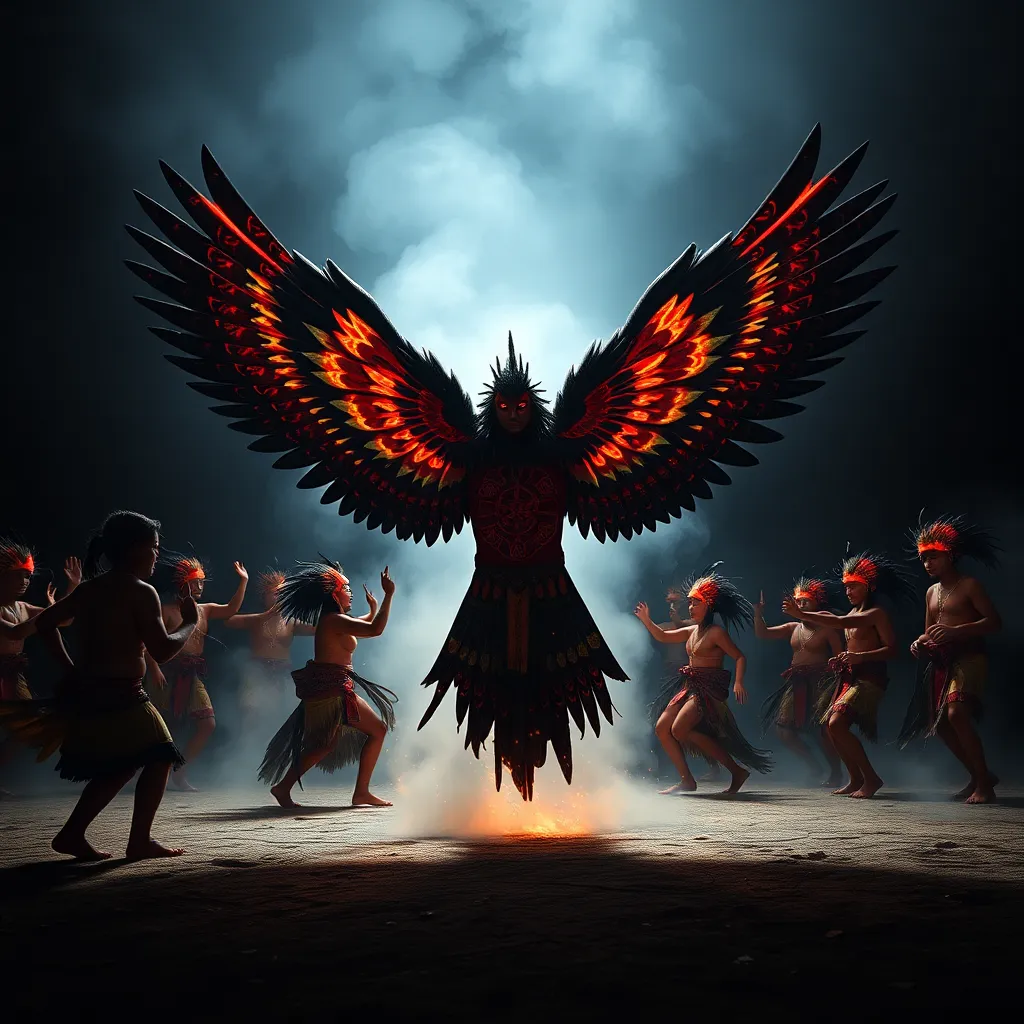The Thunderbird’s Dance: Rhythms and Ceremonies of Indigenous Peoples
I. Introduction
The Thunderbird holds a prominent place in the cultural landscape of Indigenous peoples across North America. Esteemed as a powerful spirit, it symbolizes strength, protection, and transformation. The significance of the Thunderbird goes beyond mythology; it is deeply woven into the fabric of Indigenous identity and spirituality.
Dance and ceremonies are integral to Indigenous traditions, serving as a medium for storytelling, expression, and community bonding. Through rhythmic movements and sacred rituals, Indigenous peoples celebrate their connection to the earth, the cosmos, and their heritage. This article aims to explore the various rhythms and ceremonies associated with the Thunderbird, illustrating its role in cultural identity and spiritual expression.
II. The Symbolism of the Thunderbird
The Thunderbird is revered among various Indigenous tribes, each attributing unique cultural meanings to this majestic creature. Here are some key aspects of its symbolism:
- Protector: The Thunderbird is often seen as a guardian spirit, watching over the people and the land.
- Spiritual Messenger: It is believed to carry messages between the earthly realm and the spirit world, connecting communities to their ancestors.
- Symbol of Strength: The Thunderbird embodies the power of nature, representing thunder, lightning, and rain, essential for life and growth.
Artistic representations of the Thunderbird can be found in paintings, carvings, and textiles, often accompanied by stories that highlight its significance. These narratives are passed down through generations, reinforcing cultural values and teachings.
III. The Role of Dance in Indigenous Ceremonies
Historically, dance has been a vital component of Indigenous cultures, serving not only as a form of entertainment but also as a spiritual practice. Dance is a way to communicate with the spirit world, express emotions, and celebrate significant events in the community.
Specific dances associated with the Thunderbird include:
- Thunderbird Dance: A ceremonial dance that invokes the spirit of the Thunderbird, often performed during important gatherings.
- Rain Dance: Another important ceremony that may involve Thunderbird symbolism, aimed at calling for rain and ensuring a bountiful harvest.
The connection between rhythm, movement, and spiritual expression is profound. Each step, beat, and gesture serves a purpose, creating a dialogue between the dancer and the spiritual forces they invoke.
IV. Key Ceremonies Featuring the Thunderbird
Several major ceremonies highlight the significance of the Thunderbird in Indigenous cultures:
- The Powwow: A gathering that showcases diverse Indigenous cultures through dance, music, and storytelling, often featuring Thunderbird-themed performances.
- Seasonal Celebrations: Ceremonies that mark seasonal changes, such as the spring equinox, which may include sacred dances dedicated to the Thunderbird.
Within these ceremonies, specific rituals honor the Thunderbird, such as offerings, prayers, and the use of symbolic artifacts. These practices foster community bonding and reinforce cultural identity, allowing members to connect with their heritage.
V. Instruments and Rhythms in Thunderbird Dances
Music plays a crucial role in Thunderbird dances, enhancing the overall experience and spiritual connection. Traditional instruments often used include:
- Drums: The heartbeat of the dance, drums provide a rhythmic foundation that guides the movements.
- Flutes: Their melodic tones add a layer of beauty and evoke the natural world.
- Rattles: Often used to create a lively atmosphere, rattles complement the dance’s rhythm and energy.
The importance of rhythm and music cannot be overstated; it elevates the dance, allowing participants to express their spirituality and connect with the Thunderbird’s energy. Regional variations in musical styles and rhythms also reflect the diverse cultural practices among Indigenous communities.
VI. Contemporary Interpretations and Revivals
In modern times, there has been a resurgence of interest in Thunderbird dances within Indigenous communities. This revival is often driven by younger generations seeking to reconnect with their cultural roots. The influence of globalization and cultural exchange has also introduced new elements into traditional practices, fostering innovation while honoring ancestral customs.
Efforts to preserve Indigenous dances and ceremonies are crucial, with many communities actively engaging in education and outreach programs. These initiatives aim to teach the younger members about their heritage and the significance of the Thunderbird in their cultural narrative.
VII. The Impact of the Thunderbird’s Dance on Cultural Identity
The dance associated with the Thunderbird fosters a profound sense of belonging and cultural pride among Indigenous peoples. It serves as a reminder of their resilience and connection to their ancestors.
The Thunderbird’s symbolism promotes healing and strength within communities, allowing individuals to express their experiences through movement. Here are a few testimonials from Indigenous dancers and community members:
- “Dancing the Thunderbird dance makes me feel connected to my ancestors and reminds me of my responsibility to carry our traditions forward.”
- “There is power in the rhythm; it resonates with the heartbeat of the earth and the spirit of our people.”
These stories underscore the significance of the Thunderbird’s dance in nurturing cultural identity and fostering community resilience.
VIII. Conclusion
The enduring legacy of the Thunderbird in Indigenous cultures is a testament to its significance as a symbol of strength, protection, and spiritual connection. As Indigenous peoples continue to celebrate their heritage through dance and ceremony, it is vital to respect and support these traditions.
By encouraging a deeper understanding of Indigenous arts and ceremonies, we can honor the rich cultural tapestry woven by the Thunderbird and its dance, ensuring that future generations carry this legacy forward.




